Last Updated on May 27, 2023 by Ellen
Malaysian food is fun to experience – from cendol on hot days, to nasi gorang when you want light meal.
You might be asking: what the heck are those things?
Here are some noteworthy differences on our palates and in our purses. I’m going to start with beer before I get to food, because the price of beer is Tedly’s only ding on the Malaysia dining experience.
Like Singapore, “hawker centers” are places to get some yummy, cheaper eats. These areas have vendors that sell things like beef, duck and other meats, stir fry dishes, and “carrot cake” – which is nothing like American carrot cake: it’s an omelette with a vegetable from the radish family and spices.
Omelettes are almost always an option on the menu – sometimes with seafood, like oysters.
You can almost always find chicken wings, or some variant, and beer.
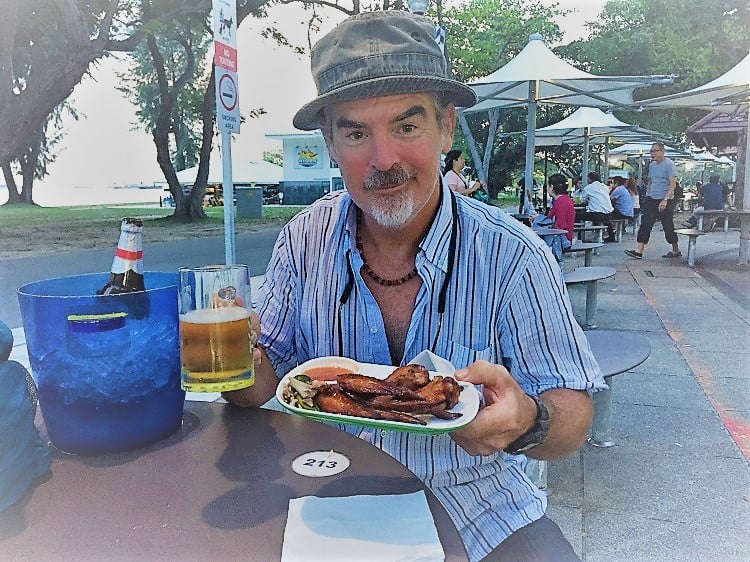
Beer
If there is one drawback to Malaysian dining, for Tedly, it’s the price of beer. Beer taxes are higher in Malaysia, which is a Muslim country.
Some examples of half-liter can beer prices:
- Singapore: between $5 and $6.
- Melaka, Malaysia: $2.25 for the cheapest one.
- Kuala Lumpur, Malaysia: $3.50
- Penang, Malaysia: $3
- Most places in Vietnam: $1.50 to $2
By the way, Tedly says Asian beer tastes the same as any medium beer back home.
Cendol
In place of beer, Tedly can instead cool off off with a big bowl of sweetness called cendol. Tedly went for a walk one day and came back with tales of the best dessert he ever ate – some kind of ice dish. I half-listened, being the snobbish chocoholic that I am. When I finally had a cendol for myself, I was surprised by how much I liked it! Beans with ice and ice cream? Slimy-looking green wormy things?
Oh hell yes.
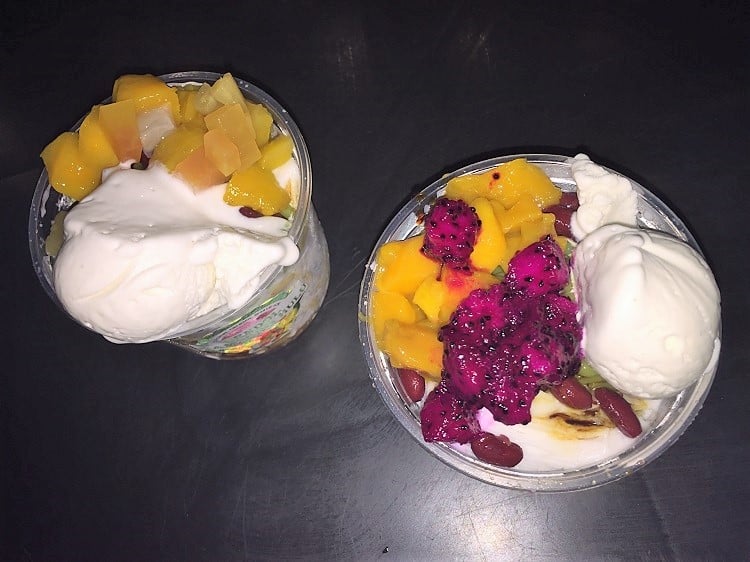
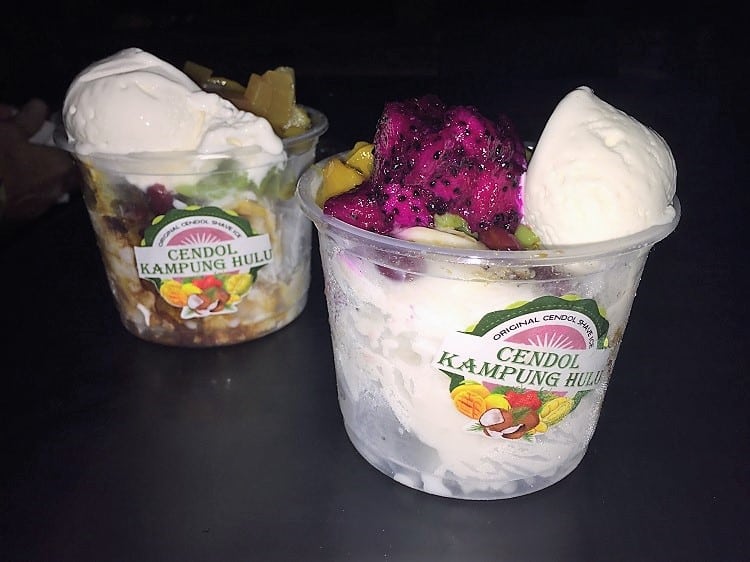
Cendol is an iced sweet dessert popular in Southeast Asia. There are variations to the main ingredients, which are worm-like green rice flour jelly, coconut milk, palm sugar syrup, red beans, vanilla ice cream, and fresh fruit toppings.
I liked it so much, if you put a chocolate cake in front of me next to cendol, there is more than a 50-50 chance I’m taking the cendol if it’s hot outside.
“See,” Tedly said, “it wasn’t just your blithering husband – it’s really that good.” His words, not mine.
These two giant treats cost $3.50.
Cendol varies in Malaysia – in some areas there won’t be ice cream, or it will cost more. The best cendol in the country, in our opinion, was at Cendol Kampung Hulu in Melaka. Their Facebook page is here.
Satay
Malaysian food explorers should try specialty satay. It’s a popular style of food in Malaysia – and also in some other Southeast Asian countries. But it’s a bit different in specialty restaurants.
Satay can be skewered meat, fish, tofu, vegetables. It’s cooked in giant vats of peanut oil. Specialty restaurants have the vat of oil right in the middle of your table. You wouldn’t ever find this in the U.S. — just think of the litigious ramifications if someone was splashed on the arm with boiling peanut oil!
So we just had to try it, and it was a fun experience at McQuek’s Satay Celup in Melacca. We picked our sticks from the fridge, placed the skewers into the oil vat at our table, and let it cook.
An attendant came around to stir the pot and check the temperature throughout the cooking process.
Wow – is it ever filling! Go when you’re really hungry.
The attendant counts the empty, color-coded sticks when you’re done eating to add up your bill. The majority of our sticks cost about a quarter, for things like fish balls, mushrooms, tofu. Sticks with real crab meat or a whole chicken wing cost more.

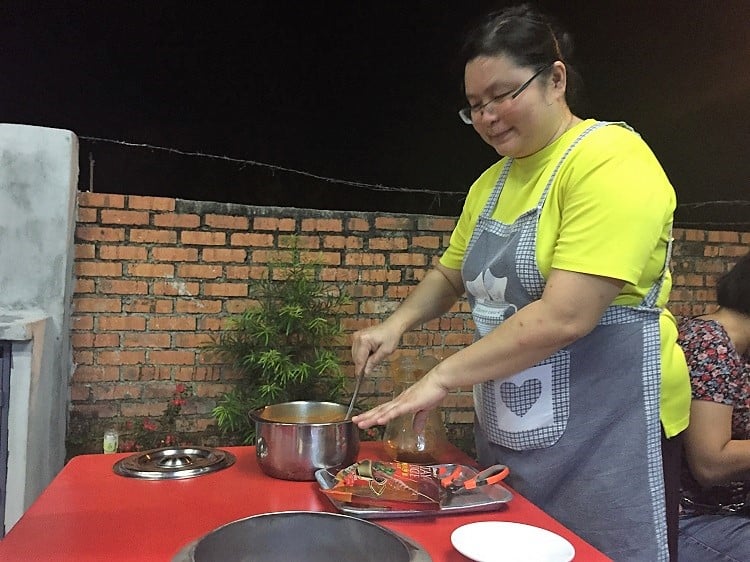
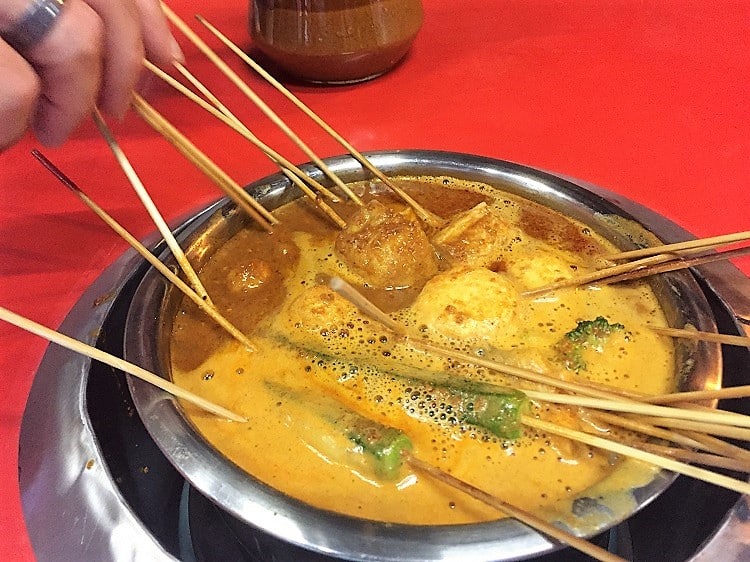
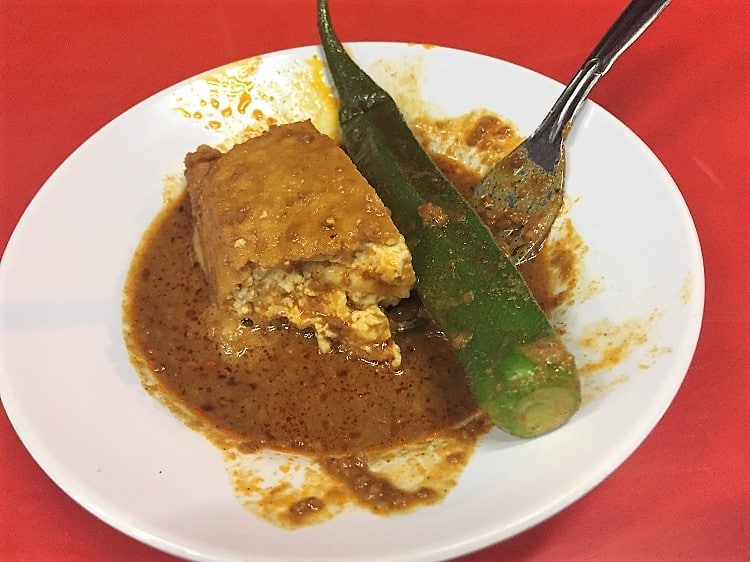
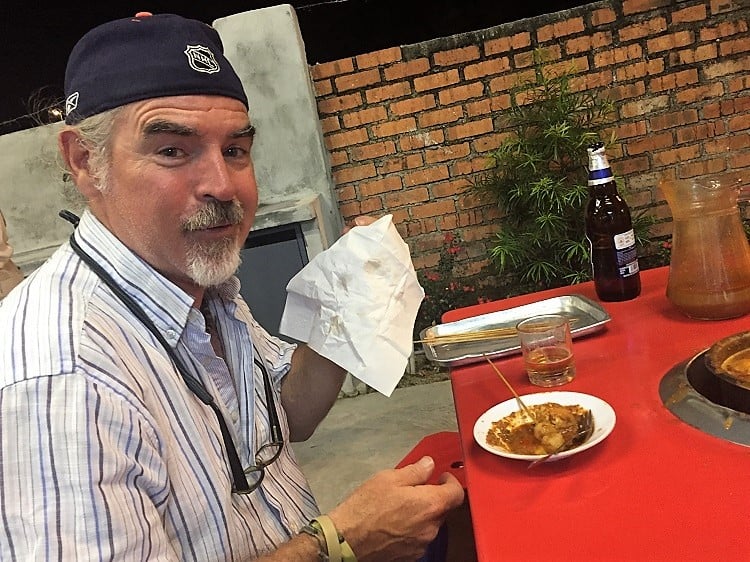
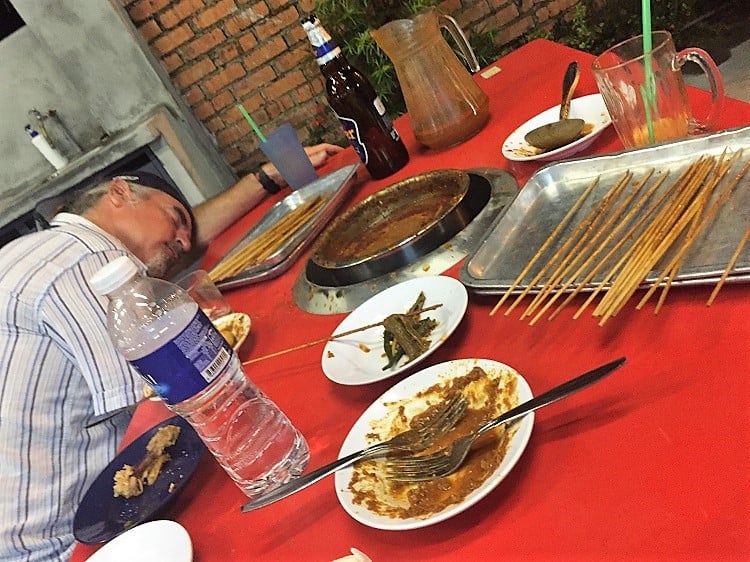
You don’t have to eat satay this way. Venders at hawker centers sell meat skewers already cooked. Usually you won’t find veggies or tofu in this way, however, unless you score with a vegetarian stand.
By the way, before I forget: bring your own napkins.
Not every restaurant provides napkins, especially if you’re off the beaten tourist path and you’re in the local neighborhoods. People simply bring their own napkins. The idea seems to be that you’ll use only what you need.
Rendang
When we asked a waiter what type of Malaysia food ‘rendang’ was, he answered, “chicken or beef rendang.” Yes, we know, but what is it? We found out when we ate it.
It’s sorta like a gravy, but not runny. Kinda like a stew, but not that thick. The meat is tender, as if it were in a crock pot all day. And the sauce has some pleasant heat.
Rendang is typically ordered with rice. In restaurants, order rice separately. Often, it comes with the meal at hawker centers.
The price for our dinner pictured below, drinks and tip included, just $15 – but that’s a lot. This was at a nice restaurant on the river in Melaka. Similar dishes at a hawker center could have cost less than a third of that price.
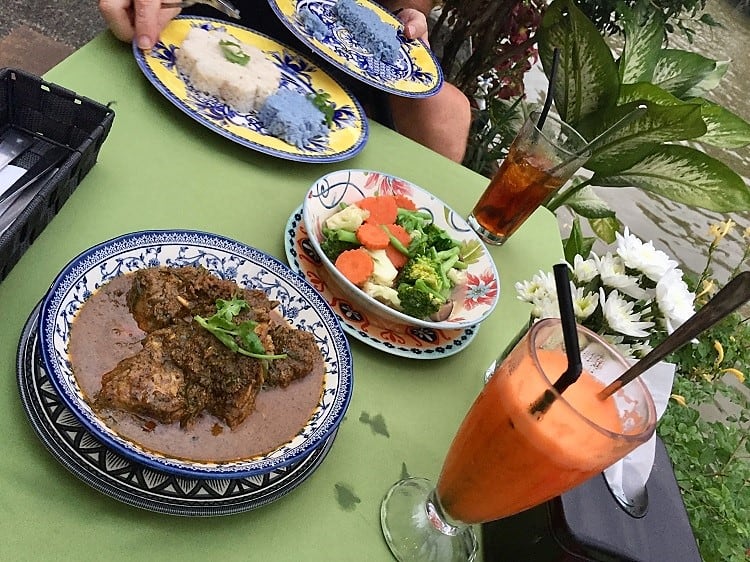
(Note, often rendang meat comes still attached to the bone… in case you’re like me and cannot eat a carcass.)
More Malaysian food: nasi, mei, roti, rojak
Nasi goreng is fried rice. Mei goreng is fried noodles. If you don’t want fried, don’t order anything with ‘goreng’. It took us a long time to get the hang of the variations. Google translate helped a lot. Add ‘ayam’ to your nasi goreng, and you’ve got chicken fried rice. The variations are endless.
Roti is the Malaysian version of a Mexican quesadilla. It’s thicker, chewier, and only comes with cheese if you order it that way. Also, with a large Indian heritage, you’ll find roti’s cousin naan – and other Indian foods at most hawker centers.
Rojak is a Malaysian ‘fruit salad.’ There are variations of this, just as there are of cendol, depending on where you are in the country, and at what type of eatery. Most often, it’s cut-up melon and other cheaper fruit with a shrimp and peanut paste. Sometimes it comes with deep-fried, crisp, thick noodles like chips.
All of the above is a dollar or two at hawker centers. Or you can pay a little more if you want to sit in a nice restaurant – up to three of four bucks, depending on where you go.
Juices
Make sure you ask for “no sugar” if you are at the cheaper hawker centers, and be aware that at cheaper establishments, sometimes it’s not pure juice.
Depending on where you order a juice, it can be as low as half a dollar for the real thing. Cheers!
The adventure continues. I’m not a foodie by any stretch – but the food is quite different on this side of the world, and Malaysian food has been a delight to eat.
Related:
- Value meals in Majahual, Mexico
- El Fogon in Playa del Carmen
- Picnic in Rome
Earth Vagabonds Newsletter
🙂
